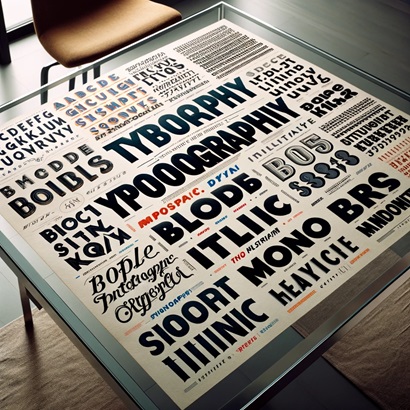
Navigating the landscape of job applications means understanding the tools used by employers to streamline their hiring processes, including Applicant Tracking Systems (ATS). These systems scan, parse, and rank resumes based on keywords and other criteria. One often overlooked aspect that can significantly affect an ATS’s ability to read a resume is the choice of font and style. This article will guide you through selecting ATS-friendly fonts and styles that not only ensure your resume passes through these systems without a hitch but also looks appealing to human eyes when it reaches the hiring manager.
The Importance of Choosing the Right Font
The choice of font in a resume can be a pivotal factor in ensuring its readability by both ATS and human recruiters. Fonts that are clear and easy to read are more likely to be parsed correctly by ATS software, which can be notoriously finicky about text recognition.
Best Fonts for ATS Compatibility
When selecting a font for an ATS-friendly resume, simplicity is key. Stick to fonts that are commonly used and easily readable. Some of the best choices include sans-serif fonts like Arial, Calibri, Helvetica, and Verdana. These fonts are favored for their clean lines and lack of extraneous details, which can confuse the ATS.
Fonts to Avoid
It’s equally important to know which fonts to avoid. Decorative fonts such as script styles like Brush Script, or any fonts that mimic handwriting, should be avoided because their complex characters can lead to parsing errors in ATS. Additionally, serif fonts like Times New Roman, while popular in more traditional industries, can sometimes cause issues with ATS due to their small decorative lines (serifs).
Formatting for ATS Optimization
While the correct font is a critical element, the overall formatting of your resume plays a significant role in its ATS compatibility. The way you structure and organize your resume can influence how effectively an ATS processes and understands the information it contains.
Use Standard Headings
To improve ATS readability, use standard resume headings such as "Work Experience," "Education," and "Skills." Custom headings like "Career Milestones" or "Professional Achievements" might be more creative, but they risk being overlooked or miscategorized by ATS software.
Avoid Using Tables and Columns
Although tables and columns can help organize information neatly, they often cause parsing errors in ATS systems. Information contained in them can be jumbled or skipped entirely when the resume is scanned by ATS. Stick to a single-column layout and use bullet points to organize details under each section, which helps ensure all your information is read and considered by the system.
Enhancing Readability and Visual Appeal
Even with ATS constraints, your resume can still be visually appealing and easy to read for human reviewers. After all, once your resume passes the ATS, it needs to make a good impression on the hiring manager.
Balancing White Space and Text
Good use of white space can make your resume feel balanced and easy to read. Avoid dense blocks of text, which can be off-putting to readers. Instead, aim for a layout that allows your text to breathe with ample margins and space between sections.
Consistent Style and Alignment
Ensure your resume maintains a professional and clean format throughout. Use a standard font, keep your formatting consistent, and ensure that the layout is ATS-friendly. This professionalism reflects your attention to detail and organizational skills.
Incorporating ATS-Friendly Design Elements
While the focus is often on what to avoid in an ATS-friendly resume, incorporating certain design elements can enhance your resume’s effectiveness without compromising its ATS compatibility.
Use Lines Sparingly
While heavy graphical elements are a no-go, using simple, thin lines to separate sections can enhance readability without causing issues with ATS. Ensure these are not in header or footer sections as some ATS software scans these areas differently.
Employing Capitalization for Emphasis
You can use capitalization to highlight section titles or important credentials. This method is effective for drawing attention without using other formatting that might not be ATS-friendly, such as bolding or italics, which can sometimes translate poorly depending on the ATS.
Conclusion
Crafting an ATS-friendly resume is crucial in the digital age, where your first impression on potential employers is often made through software. By choosing the right fonts and styles that are both appealing and compliant with ATS, you can significantly boost your chances of getting your resume seen by a human recruiter. At Resume Optimizer Pro, we specialize in providing ATS-friendly templates that conform to the best practices for resume writing. Our templates are designed to balance aesthetic appeal with functionality, ensuring that your resume is not only compatible with ATS systems but also capable of making a strong impression in every phase of the job application process.